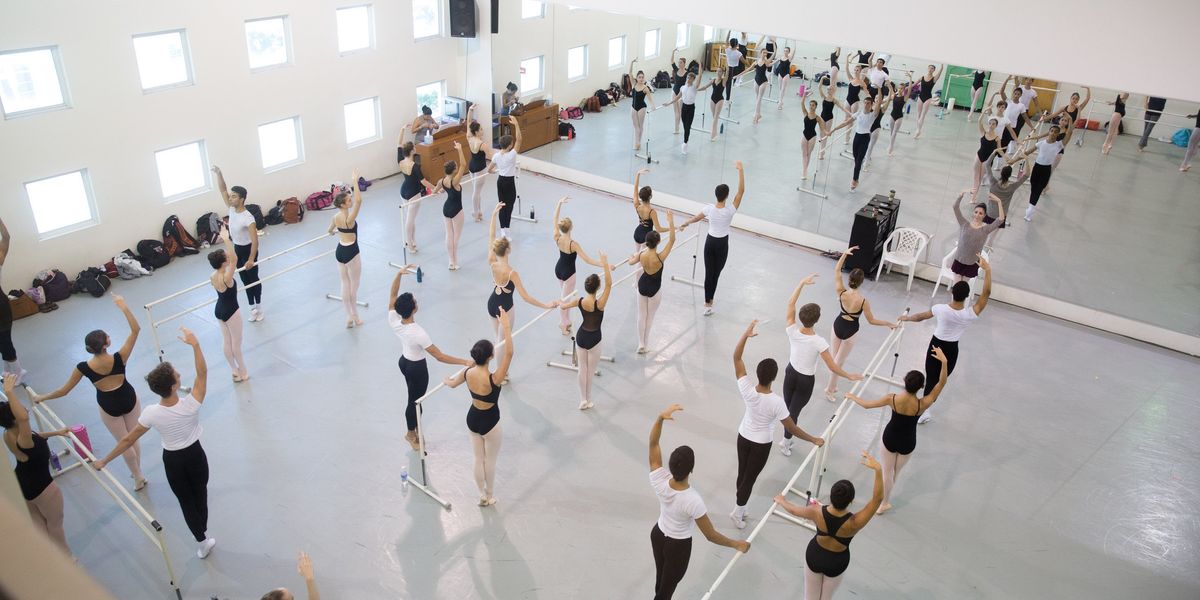Plan Your Summer Intensive Audition Tour
Growing up in Michigan, Jessy Dick was used to her daily hour-long drives to the Grand Rapids Ballet School, where she trained. But when she started to think about summer intensives, a new problem emerged: Auditions for the schools she was interested in were even farther away, in Chicago or Detroit. “I learned early on that if I wanted to do any summer programs, I’d have to travel at least three hours in order to audition,” says Dick, now a member of The Washington Ballet’s Studio Company.
Making plans for your summer training is complicated enough, especially with the sheer number of programs to choose between. But students who live far from popular audition hubs face the additional hurdle of organizing, scheduling and budgeting for audition trips. Luckily, with strategic planning, what can feel overwhelming at first can become a rewarding experience.
Organize, Prioritize

Students at the Ballet Conservatory of Asheville look for weekends when auditions overlap in one city. Blair Chamberlain, Courtesy Ballet Conservatory of Asheville.
For dancers without the luxury of an audition city nearby, prioritizing which schools to aim for is crucial. How to decide? Research, research, research. (Pointe‘s “Summer Intensive Guide” is a good place to start.) Emily McDougall, a 14-year-old student at The School of Oklahoma City Ballet who’s made several six-hour drives to auditions in Dallas and Kansas City, does some serious investigating in order to narrow down her choices.
“I’m quite tall, so I look for places that seem to like taller dancers, and that are close to the technique I train in,” says McDougall. She then makes a list of programs she’s leaning towards and which auditions she can realistically travel to. “I find overlapping dates, and make an Excel spreadsheet of how long each audition is, its location, requirements, et cetera.”
McDougall also uses online forums like Ballet Talk for Dancers to glean information about intensives from other students who have gone there, and turns to her teachers and Oklahoma City Ballet company members for insight beyond what’s posted in school advertising or on websites.
If you know you won’t be able to attend many auditions, Arantxa Ochoa, Miami City Ballet School’s director of faculty and curriculum, advises that you consider what you want out of your summer and eliminate schools that wouldn’t fulfill your goals. Think not only about company affiliation and visibility, but class size, technique or style taught, performance opportunities, and how many hours a day you will be dancing.
Maximize Audition Weekends

Jessy Dick in a production of Giselle at Butler University. Courtesy Dick.
Planning an audition trip is complicated—expenses, mode of transportation, family obligations, and school and rehearsal schedules all have to be factored in. Students at the Ballet Conservatory of Asheville in North Carolina look for auditions in Charlotte, Winston-Salem and Atlanta, each a two- to four-hour drive away. Director Angie Lynn helps them maximize each trip by identifying dates when several auditions overlap.
“We look at a weekend as a whole,” says Lynn. “If there are three auditions in two days, we’ll consider staying overnight, even if they’re not all on our list of top choices,” she says. And if outside factors dictate which weekends you can travel and which auditions you can attend, adding in a backup school isn’t a waste of time. “It’s good practice and gives you more options,” Lynn adds.
Being well organized is critical if you’re grouping multiple auditions into one weekend. Two may be in the same city but held at different studios in opposite areas of town—and you don’t want to be racing through traffic at the last minute. Penny Askew, director of the School of Oklahoma City Ballet, tells her students to prepare well in advance. “Have each audition’s requirements—fees, photos, resumés—organized in a folder. Is pre-registration required? What payment methods are accepted? And research the logistics of getting from one audition to another—it may be too stressful to try to make it work.”
Cramming in too much puts you at risk for not looking your best. Lynn recommends limiting auditions to two per day. “Once we lined up three in a row, which was overkill,” she says. “They’d come out of one audition, change their number and run into the next. It was too much, and they were exhausted.”
Be Travel-Savvy
Audition trips can be expensive, but finding ways to minimize costs might allow you to make multiple trips. Talk with fellow classmates to see who’s interested in the same auditions you are, says Katie van der Mars, conservatory director of Nebraska Ballet Theatre & School. “The nearest location for us is Chicago, an eight-hour drive away. It’s a trek, so our most serious students coordinate with each other to pick one weekend when someone’s mom can drive, and they all go together.” (Price-comparison websites like Wanderu can help you find an affordable bus or train when driving isn’t an option.)
If hotels are too pricey, consider booking through Airbnb or staying with someone you know in the area. Dick, for example, was able to make several audition trips possible by staying overnight with relatives.
When Traveling Isn’t Feasible…

Arantxa Ochoa teaching class. Alexander Iziliaev, Courtesy Miami City Ballet.
If attending your dream school’s audition in person is too logistically difficult, video submissions are always an option (click here for some helpful guidelines). Ochoa says she gives videos equal consideration, but students should follow the school’s guidelines precisely. “That shows us something about their work ethic and personality,” she says. If you have any uncertainties about what a particular school requires or prefers, call its administrator and ask.
While it’s a lot to organize, keep in mind that planning your summer intensive auditions has benefits of its own: The skills you learn by researching programs, making informed choices and pooling resources are the same skills you’ll need when auditioning as a professional dancer.






